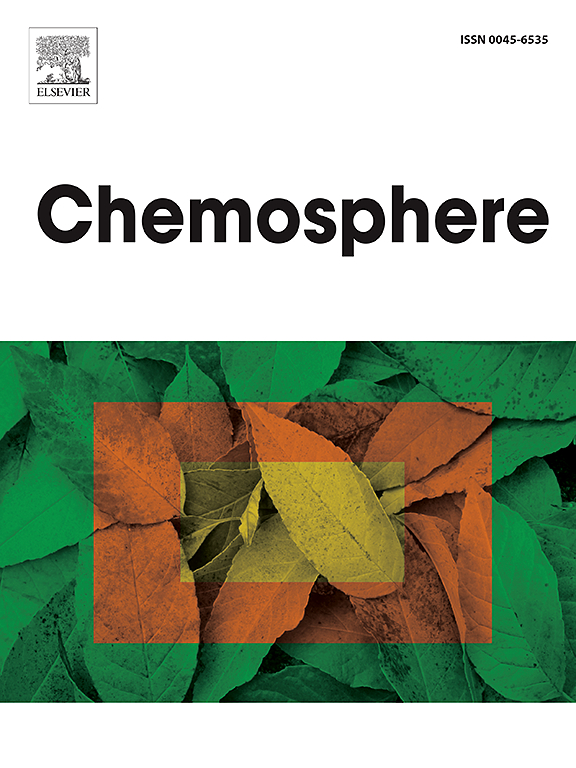A low-energy solution for the removal of cyanobacteria and cyanotoxins: UV-A LED photolysis
IF 8.1
2区 环境科学与生态学
Q1 ENVIRONMENTAL SCIENCES
引用次数: 0
Abstract
Climate change and eutrophication contribute to proliferation of cyanobacteria and cyanotoxins in aquatic environments. Conventional treatments can be ineffective to remove high cell densities of cyanobacteria and dissolved toxins. Therefore, alternative mitigation strategies are required to effectively remove these contaminants at source. In a previous photocatalytic study (Menezes et al., 2021a), UV-A irradiation was used as a light control system, however, UV-A irradiation was shown to be effective in the removal of the cyanobacterium Microcystis aeruginosa PCC 7813 and four microcystins. In this study, a chemical-free water treatment approach using photoinduced photolysis was explored by using UV-A 365 nm LED irradiation, a low-energy wavelength near the visible light spectrum, for the effective removal of cyanobacteria and toxins. Six Microcystis aeruginosa strains (SCIENTO, NIES1099, B2666, PCC7820, 7813 and 7806) were exposed to UV-A 365 nm irradiation for seven days. Photosynthetic activity significantly decreased after 24 h, with samples showing little to no photosynthetic activity by the end of the investigation. Total microcystin concentrations (intra- and extracellular) decreased in UV-A treated samples with 86 % removal of combined microcystins. Notably, microcystins removal varied by analogue (94 % of MC-RR was removed compared to 9 % of MC-YR). Furthermore, nutrients in the cyanobacteria growth medium used in lab-scale experiments, such as nitrate and iron, enhanced the UV-A photolytic degradation of microcystins, reflecting the potential for environmental conditions to amplify treatment effects. This study represents the first proposal of a UV-A LED-based photolytic method for cyanobacterial and cyanotoxin removal, offering a transformative, low-energy and chemical-free water treatment.

一种用于去除蓝藻和蓝藻毒素的低能量解决方案:UV-A LED光解
气候变化和富营养化有助于水生环境中蓝藻和蓝藻毒素的增殖。传统的治疗方法无法去除高浓度的蓝藻和溶解的毒素。因此,需要采取其他缓解战略,从源头上有效地消除这些污染物。在之前的一项光催化研究中(Menezes et al., 2021a),使用UV-A照射作为光控系统,然而,UV-A照射被证明对铜绿微囊藻PCC 7813和四种微囊藻毒素的去除是有效的。在本研究中,我们探索了一种利用光诱导光解的无化学水处理方法,利用UV-A 365 nm LED照射,一个接近可见光光谱的低能量波长,有效去除蓝藻和毒素。将6株铜绿微囊藻(SCIENTO、NIES1099、B2666、PCC7820、7813和7806)暴露于UV-A 365 nm照射下7 d。光合活性在24小时后显著下降,在调查结束时样品显示很少或没有光合活性。在UV-A处理的样品中,总微囊藻毒素浓度(细胞内和细胞外)降低,联合微囊藻毒素去除率达86%。值得注意的是,微囊藻毒素的去除率因类似物而异(MC-RR的去除率为94%,MC-YR的去除率为9%)。此外,在实验室规模实验中使用的蓝藻生长培养基中的营养物质,如硝酸盐和铁,增强了微囊藻毒素的UV-A光解降解,反映了环境条件放大处理效果的潜力。该研究首次提出了一种基于UV-A led的光解方法,用于去除蓝藻和蓝藻毒素,提供了一种变革性、低能耗和无化学物质的水处理方法。
本文章由计算机程序翻译,如有差异,请以英文原文为准。
求助全文
约1分钟内获得全文
求助全文
来源期刊

Chemosphere
环境科学-环境科学
CiteScore
15.80
自引率
8.00%
发文量
4975
审稿时长
3.4 months
期刊介绍:
Chemosphere, being an international multidisciplinary journal, is dedicated to publishing original communications and review articles on chemicals in the environment. The scope covers a wide range of topics, including the identification, quantification, behavior, fate, toxicology, treatment, and remediation of chemicals in the bio-, hydro-, litho-, and atmosphere, ensuring the broad dissemination of research in this field.
 求助内容:
求助内容: 应助结果提醒方式:
应助结果提醒方式:


